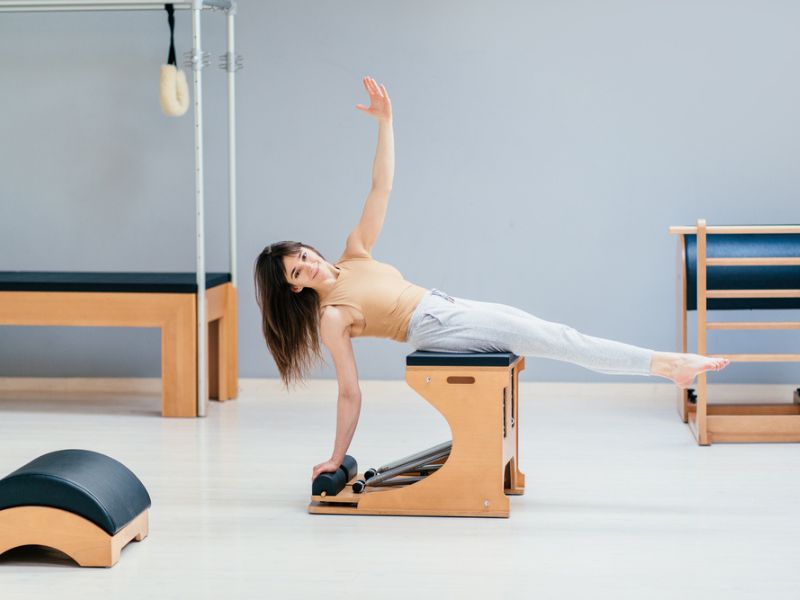When choosing between Pilates and yoga, it’s essential to understand the critical differences between these popular exercise practices. While they share some similarities, such as promoting physical and mental well-being, each has distinct characteristics and benefits. Let’s explore the fundamental differences between Pilates and yoga.
Origins And Philosophy
Pilates: Developed by Joseph Pilates in the early 20th century, it improves strength, flexibility, and body awareness by focusing on a solid core and proper alignment.
Yoga: Originating in ancient India, it combines postures, breath control, meditation, and philosophy to unite the body, mind, and spirit for balance, flexibility, and inner harmony.

Image Credit: Pexels/Lucas Pezeta & Shutterstock/Gerain0812
Movement And Techniques
Pilates exercises involve controlled, precise movements that target specific muscle groups. It utilizes specialized equipment like the reformer, Cadillac, Pilates chair, and mat exercises. Pilates focuses on building core strength, improving posture, and enhancing overall body alignment through controlled movements and proper breathing techniques.
Yoga encompasses a wide range of postures (asanas) held for varying durations. It emphasizes fluid movements, deep stretching, and breath control. Yoga practitioners aim to increase flexibility, balance, and strength while cultivating mindfulness and inner calmness.
Physical Benefits
Pilates helps strengthen the core muscles, including the abdomen, back, and pelvic floor. It improves overall body strength, stability, and alignment. Pilates is often recommended for individuals seeking rehabilitation from injuries, enhancing athletic performance, or developing a solid foundation for other physical activities.
Yoga enhances flexibility, improves balance, and increases muscular strength. Regular yoga practice can improve posture, body awareness, and increased range of motion. It also promotes relaxation, stress reduction, and overall physical well-being.

Image Credit: Shutterstock/Iryna Inshyna
Mind-Body Connection
While Pilates emphasizes body awareness and control, it places more emphasis on physicality than spirituality. It encourages a focused and mindful approach to movement, but the primary focus is strengthening and conditioning the body.
Yoga cultivates a deep mind-body connection by integrating physical postures, breathwork, and meditation. It promotes self-awareness, mindfulness, and emotional well-being. Yoga is often practiced as a holistic approach to health, encompassing physical, mental, and spiritual aspects.